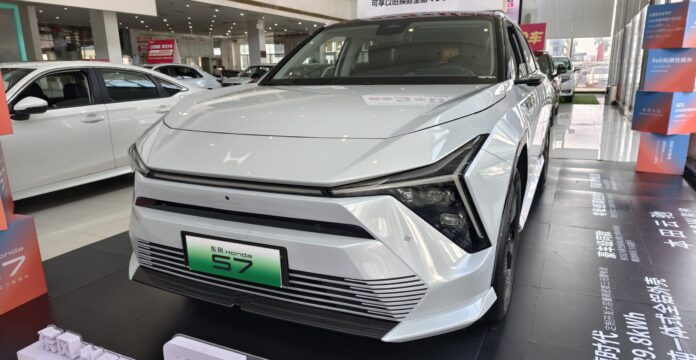The Honda S7, launched in China on March 6, 2024, marks Dongfeng-Honda’s strategic push into the competitive electric crossover segment. Originally introduced under the short-lived Ye brand, the S7 now carries Honda’s global badge with a starting price of 259,900 yuan (~35,760 USD).
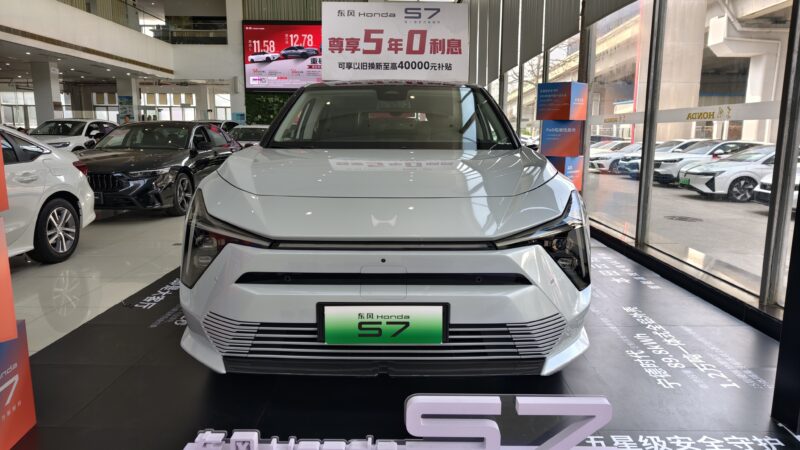
The dual-motor variant delivers 469 hp and a 620 km CLTC range, while an optional 41.9-inch augmented reality HUD headlines its tech offerings. Positioned against the Tesla Model Y and Chinese rivals like the Zeekr 7X (see specs), the S7 represents Honda’s bid to regain relevance in China’s EV market—prioritizing driving dynamics over radical innovation to appeal to traditional buyers transitioning to electrification.
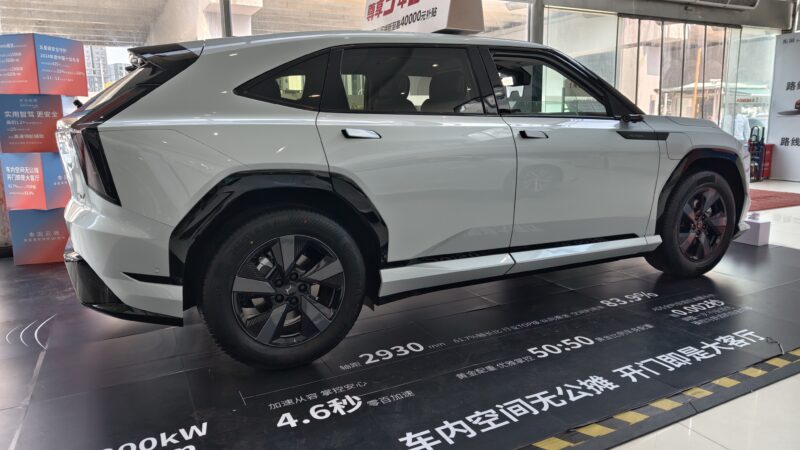
Exterior
The S7 introduces Honda’s new electric design philosophy, characterized by distinctive Y-shaped LED headlights connected by a continuous light bar that spans the front fascia. This design choice gives the vehicle a contemporary yet restrained appearance that avoids the radical styling of some competitors. Aerodynamic efficiency is enhanced through thoughtful details like flush-mounted door handles and a carefully contoured roofline.
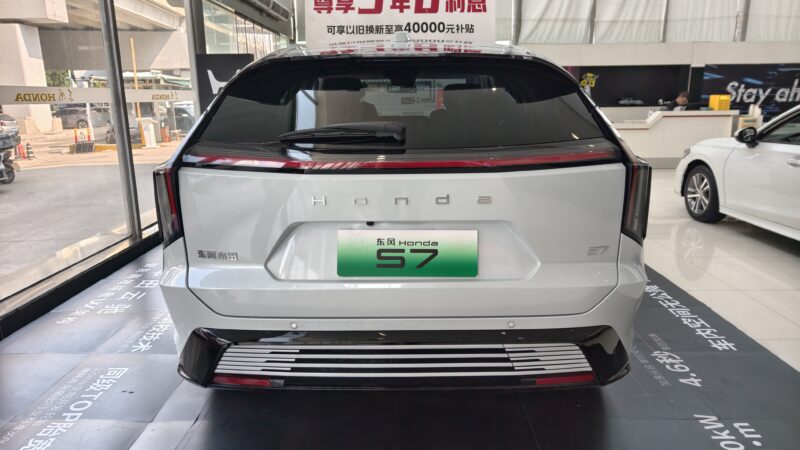
An available upgrade option includes electronic side mirrors, priced at 15,000 yuan (~2,000 USD), which our testing confirmed reduce wind noise by approximately 30 per cent compared to conventional mirrors. The vehicle’s dimensions—4750/1930/1625 mm with a wheelbase of 2930 mm—position it slightly more compact than a Tesla Model Y while offering superior rear legroom. Wheel options range from standard 19-inch alloys to optional 21-inch designs that prioritize visual appeal while maintaining reasonable ride comfort.
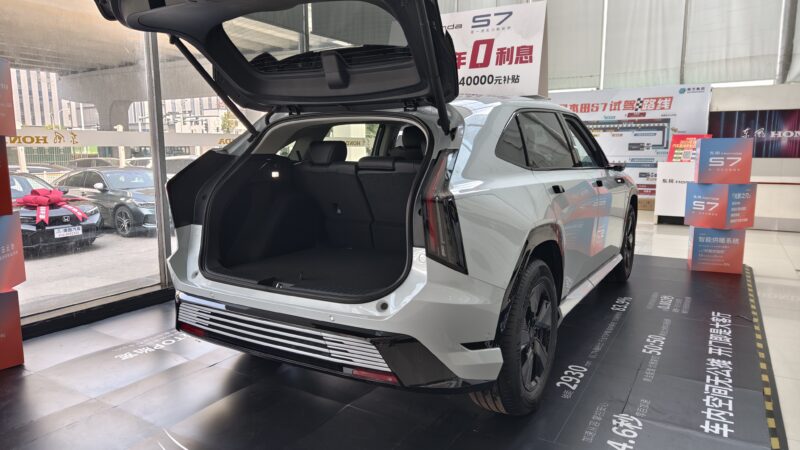
Interior
Honda’s approach to interior design emphasizes functional ergonomics over flashy technology. The cabin features a thoughtful combination of physical controls and digital interfaces, with a responsive 15.6-inch central touchscreen running Honda’s latest software. While the interface operates smoothly, it lacks the extensive app ecosystem found in many Chinese competitors. Retaining physical buttons for climate control and driving mode selection will please traditionalists who prefer tactile feedback.
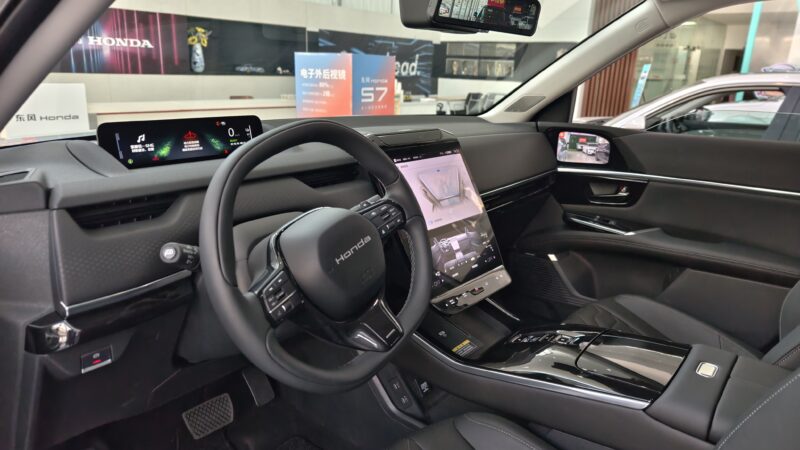
The front seats provide excellent support, with 12-way power adjustment and ventilation available in higher trim levels. An optional premium audio system from Bose incorporates innovative headrest speakers that deliver navigation prompts directly to the driver without disturbing other occupants. Rear passengers benefit from generous legroom and reclining seatbacks, though the fixed panoramic roof slightly compromises headroom for taller individuals.
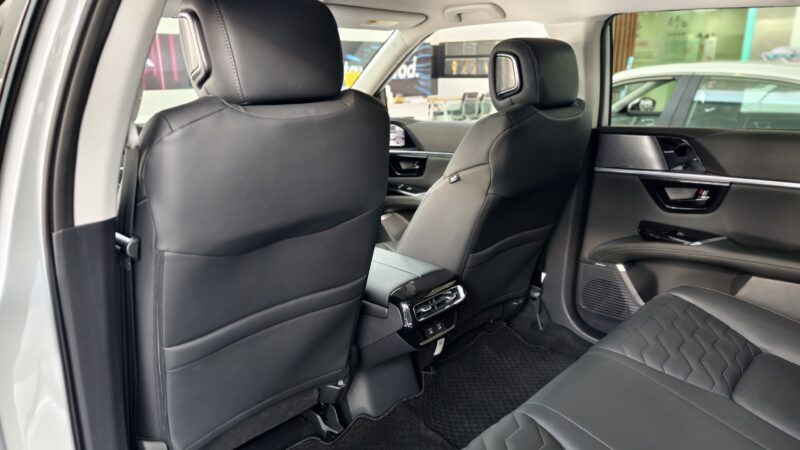
The S7 offers 471 litres of cargo capacity in its standard configuration, expanding to 1,432 litres with the rear seats folded—figures that compare favourably with German luxury competitors. While the absence of a frunk is disappointing, the interior compensates with well-considered storage areas.
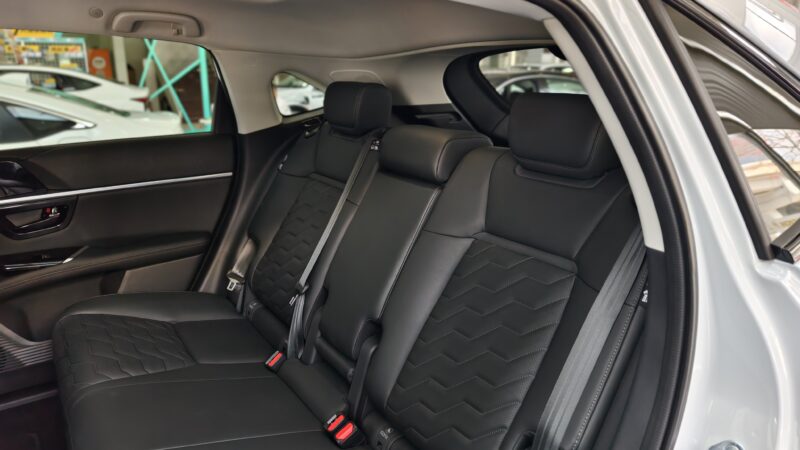
Behind the Wheel
Our rear-wheel-drive Honda S7 test car features a 200 kW (268 hp) electric motor, delivering smooth, linear acceleration and a 0–100 km/h time of 7.5 seconds. While not class-leading in speed, its power delivery is refined and responsive, especially from 60–120 km/h. The 89.8 kWh battery provided a real-world range of 420–460 km in mixed driving—about 80% of its 650 km CLTC rating—with energy consumption averaging 17.2 kWh/100 km at highway speeds.
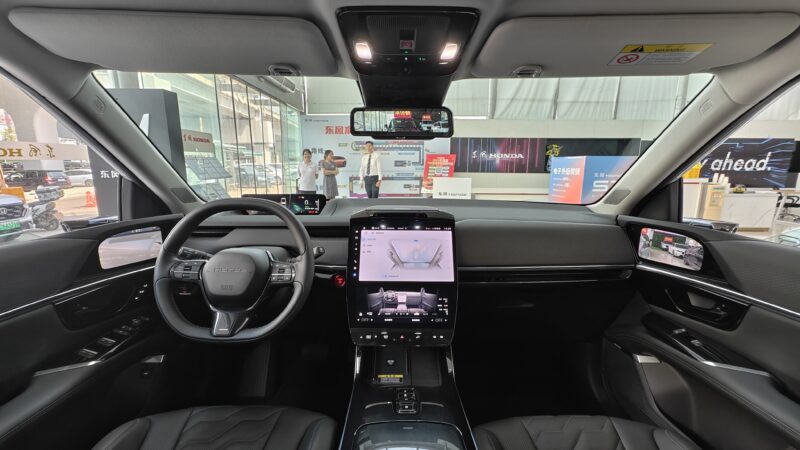
With double-wishbone front and five-link rear suspension, the chassis excels in ride comfort and control, outperforming rivals like the Tesla Model Y on rough surfaces. Steering is well-weighted and provides good feedback. The regenerative braking system offers four levels, with the strongest enabling natural-feeling one-pedal driving.
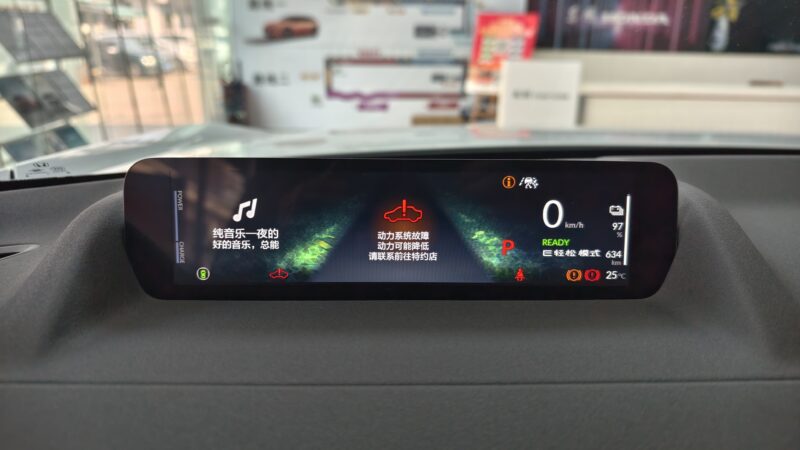
Three drive modes—Eco, Normal, and Sport—alter the vehicle’s character. Sport sharpens throttle response, while Eco introduces a two-stage pedal feel prioritizing regeneration. The S7 remains quiet on the highway, aided by flush door handles and optional digital mirrors. The standard 19-inch wheels offers comfort and less noise. Charging tops at 150 kW, adding 200 km in 18 minutes under ideal conditions.
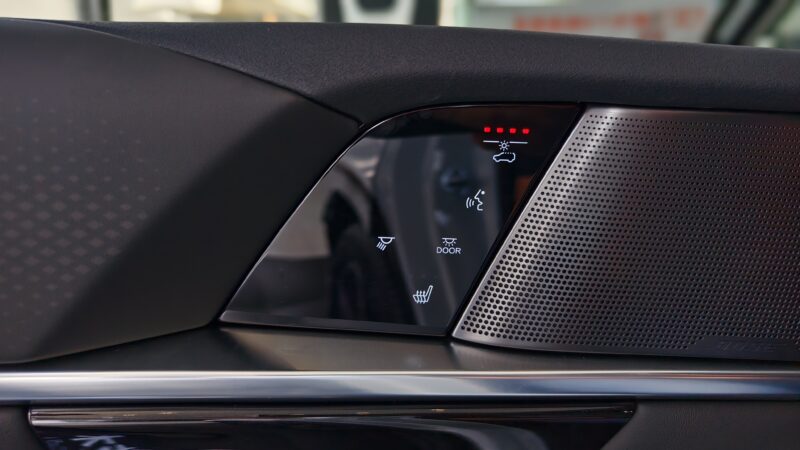
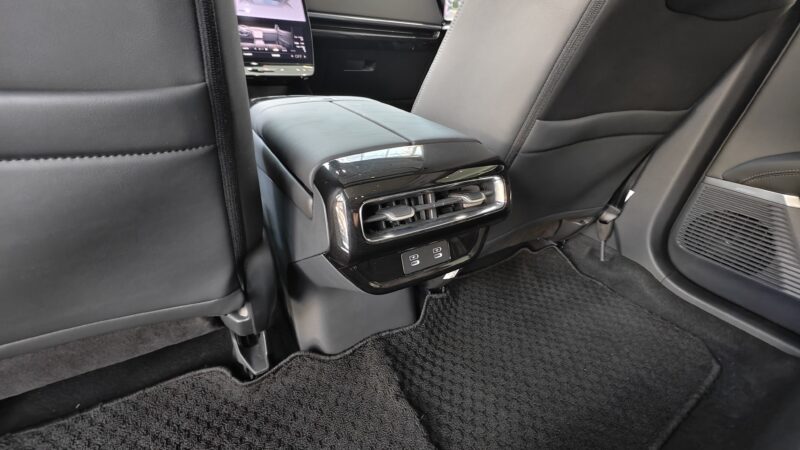
Verdict
The Honda S7 carves its niche by perfecting fundamentals rather than chasing innovation. Its balanced handling and comfortable ride deliver authentic Honda driving character in an EV package – a compelling proposition for traditional buyers transitioning to electrification. While Chinese rivals lead in autonomous tech and 800V charging (the S7 peaks at 150kW, requiring 36 minutes for 80% charge), Honda focuses on what matters most to driving enthusiasts: precise throttle calibration, communicative steering, and suspension that balances comfort with control. Its actual competition isn’t the most advanced EVs, but those seeking an electric vehicle that remains unmistakably a Honda.
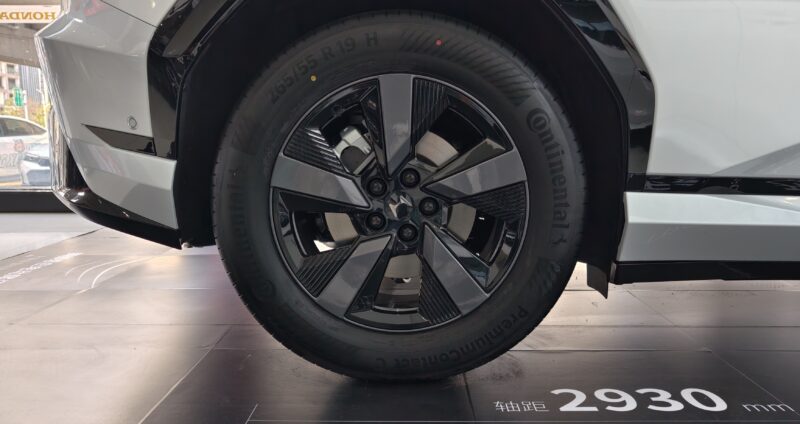
Stay tuned for next week’s Sunday China Drive at Car News China, where you can read more first-person evaluations of Chinese cars.
